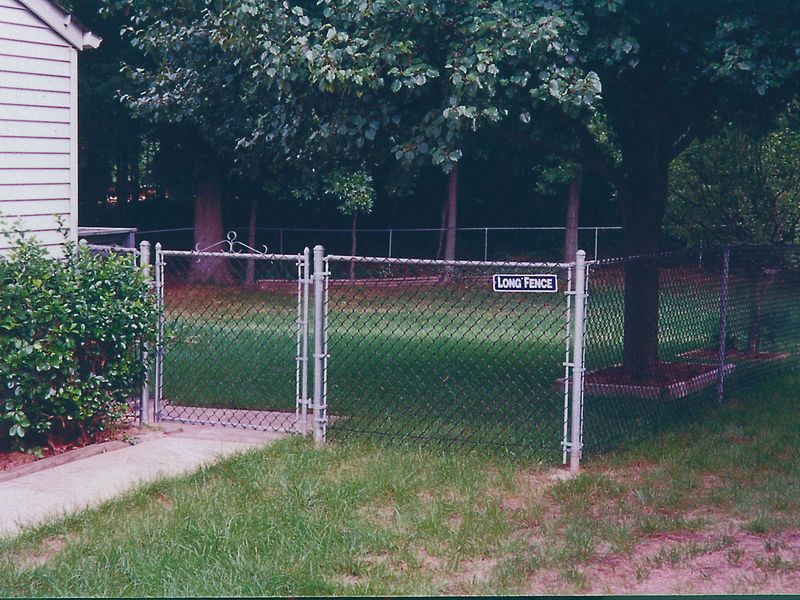Chain link fences are one of the most important features found in yards. Not only do they act to delimit the boundaries of your property, but they also provide privacy, security, and a place for your children to safely play. For those reasons, it is natural to want to either install a chain link fence to a yard that currently doesn’t have one, or to replace an old or unattractive fence.
Yet before you begin chain link fence installation, it is important that you consider a few key things. Otherwise you may find yourself having to go back to the drawing board when you encounter unplanned difficulties. To learn more about what you need to consider when making plans for your fence, read on. This article will introduce you to four important things you will need to do prior to chain link fence installation.
Research the regulations in your city or town
Many people spend weeks and months planning out their dream fence–only to find at the last minute that it does not comply to regulations set forth by their local municipality. Avoid this frustration by kicking off your planning phase with a thorough investigation of such limits. One good place to begin is with the local homeowner association. Inquire about whether restrictions or regulations exist on things such as:
- The height of a chain link fence
- The building materials used in constructing a fence
- The location of the chain link fence from the sidewalk or street
Save yourself the trouble of proceeding until you have verified each of these points. Only then may you safely move on to planning the details of your fence-to-be. Yet be aware that, before you can get underway with installation, it may be necessary to get a building permit from the city. This generally involves the submission of design information regarding the materials, height, and placement before you begin chain link fence installation. Fortunately, a qualified fencing contractor can usually work out this end of the process for you.
Make fence function your first priority
Now that you have successfully educated yourself about the design limitations, it’s time to start the fun part: selecting the fence that will best mesh with the aesthetic vision you have for your home and yard. Yet while appearance is undeniably important, it should never take priority over factors such as security, privacy, and, for those with pets or small children, enclosure considerations.
Depending on your particular needs and desires where each of these factors are concerned, you may find that certain building materials are more suitable than others. For example, those with a priority on high security will never meet their needs with a vinyl fence, no matter how beautiful it is. In that case, wood or steel will serve much better. Try writing out a list of the most important roles you want your fence to play. Then share these with your fencing contractor and discuss what building materials and design styles can best meet your needs.
Consider the effects your climate will have on the fencing material
Before you begin chain link fence installation, it is also important to be knowledgeable about the structural limitations of a given fencing material. In other words, not all fencing materials are appropriate for use in all parts of the country. If you are not careful, the material you choose may end up having a much shorter lifespan than you expected.
Those living in a colder part of the country–one that regularly experiences sub-freezing temperatures during the winter–must be especially careful regarding fence post anchoring. In general, it is best to utilize concrete anchors in such climates. That’s because, when the soil freezes, the water contained in it will expand. This leads to what is known as heaving–that is, an increase in the volume of the soil. A poorly anchored fence post can easily be jarred free or outright snapped by such a phenomenon.
On the other hand, those who live in warm humid climates must understand the risks involved in selecting wood as a building material. A wooden fence will stand a much greater chance of succumbing to rot, insect infestations, and other moisture-related problems. Likewise, metal fencing will be susceptible to rust and corrosion should its paint or coating become chipped or damaged. Vinyl fencing is a much more suitable option for such climates, since it will be impervious to most of the effects above.
Let your neighbors know before you begin chain link fence installation
Many people get so carried away by the excitement of installing a new chain link fence that they forget one important thing: the fence will impact your immediate neighbors almost as greatly as you. That doesn’t mean that you need to invite them into the planning phase. But, as far as maintaining cordial relations goes, you will likely find it worthwhile to apprise your neighbors before you break ground.
Make sure you know exactly where the property lines are before you start to avoid problems with your neighbors. Read more on our blog about building fences on property lines.
Keeping your neighbors up to date about your project will help to put them at ease. That’s because they will not have to wait, worrying, to find out what kind of fence you have decided to erect. And for all you know, they may have some valuable input to ensure the best results from your chain link fence installation!
If you have decided that it’s time for a new chain link fence on your property, please do not hesitate to contact the experts at Long Fence. They will be able to offer a wealth of professional experience to help you determine the best way to carry out your plans.
Read More:
What Should You Consider When Deciding on the Right Chain Link Fence Gate for Your Property?

